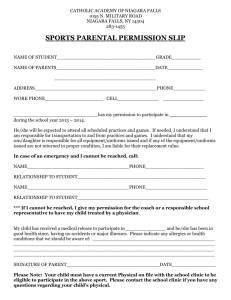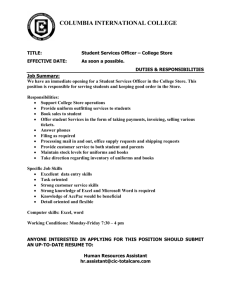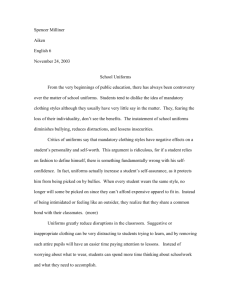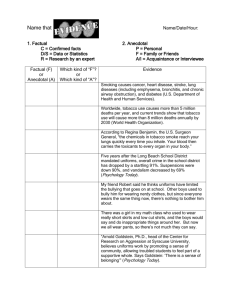School Uniform Editorials
advertisement
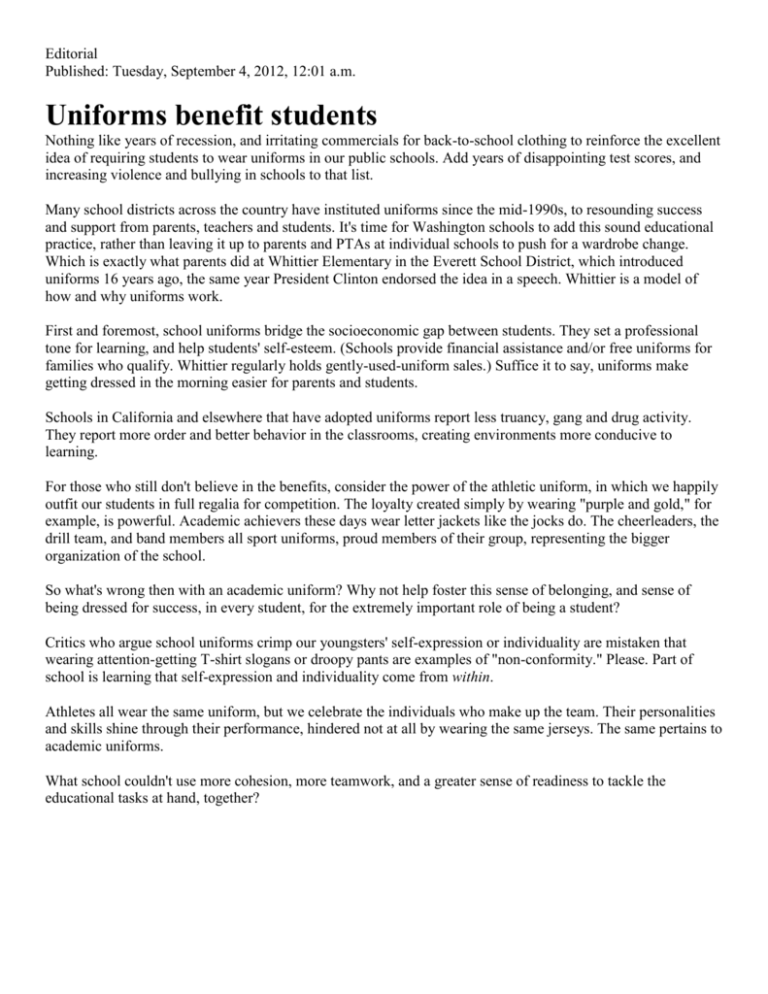
Editorial Published: Tuesday, September 4, 2012, 12:01 a.m. Uniforms benefit students Nothing like years of recession, and irritating commercials for back-to-school clothing to reinforce the excellent idea of requiring students to wear uniforms in our public schools. Add years of disappointing test scores, and increasing violence and bullying in schools to that list. Many school districts across the country have instituted uniforms since the mid-1990s, to resounding success and support from parents, teachers and students. It's time for Washington schools to add this sound educational practice, rather than leaving it up to parents and PTAs at individual schools to push for a wardrobe change. Which is exactly what parents did at Whittier Elementary in the Everett School District, which introduced uniforms 16 years ago, the same year President Clinton endorsed the idea in a speech. Whittier is a model of how and why uniforms work. First and foremost, school uniforms bridge the socioeconomic gap between students. They set a professional tone for learning, and help students' self-esteem. (Schools provide financial assistance and/or free uniforms for families who qualify. Whittier regularly holds gently-used-uniform sales.) Suffice it to say, uniforms make getting dressed in the morning easier for parents and students. Schools in California and elsewhere that have adopted uniforms report less truancy, gang and drug activity. They report more order and better behavior in the classrooms, creating environments more conducive to learning. For those who still don't believe in the benefits, consider the power of the athletic uniform, in which we happily outfit our students in full regalia for competition. The loyalty created simply by wearing "purple and gold," for example, is powerful. Academic achievers these days wear letter jackets like the jocks do. The cheerleaders, the drill team, and band members all sport uniforms, proud members of their group, representing the bigger organization of the school. So what's wrong then with an academic uniform? Why not help foster this sense of belonging, and sense of being dressed for success, in every student, for the extremely important role of being a student? Critics who argue school uniforms crimp our youngsters' self-expression or individuality are mistaken that wearing attention-getting T-shirt slogans or droopy pants are examples of "non-conformity." Please. Part of school is learning that self-expression and individuality come from within. Athletes all wear the same uniform, but we celebrate the individuals who make up the team. Their personalities and skills shine through their performance, hindered not at all by wearing the same jerseys. The same pertains to academic uniforms. What school couldn't use more cohesion, more teamwork, and a greater sense of readiness to tackle the educational tasks at hand, together? Editorial The case against high school uniforms Published: Sunday, May 31, 2009, 10:43 AM By Alicia Thomas Two simple words send shivers down the spines of students everywhere: school uniforms. A school administrator who merely mentions these words in passing can expect to be ambushed with the frantic questions of students and parents alike. What kind of uniforms? Where are we supposed to buy them? How much are they going to cost? Don't you care that uniforms trample on students' individuality? Do you realize what you're doing? Allow me to answer these questions for poor, ambushed administrators. Types of uniforms vary from school to school. The stereotypical Catholic school uniform for girls consists of a plaid skirt or jumper, blouse and Mary-Jane shoes. For boys, dark dress pants, a button-down shirt and tie. However, when public schools switch to uniforms, they tend to stick with khaki pants and polo shirts for both sexes. These khakis and polos aren't supposed to come from an Abercrombie & Fitch outlet near you. Most school districts ask that parents buy all of their children's uniforms from the same distributor to alleviate the age-old competition of which students' parents can buy them the most fashionable clothing. Schools use stores such as Lands' End, Buckhead and JCPenney as their uniform providers, thus making basic uniforms decently affordable. But decently affordable might not be affordable enough. Consider a lower-middle-class family of seven: that's five kids. Each of those kids, all of varying ages and sizes, needs their own school uniform -- and not just one pair of khakis and a single polo. They each must have enough clothes to get them through their week. Their polos can't all be the same, either; some need to be long-sleeved for fall and winter, some short-sleeved for spring and summer. And parents have to make sure that these stores carry sizes that will fit their husky son and thin-as-a-rail daughter. But plus sizes and slim sizes cost extra, if the store even carries them. Suddenly, the uniforms don't seem quite so affordable. And those students who are huskier or thinner than most kids their age suffer an additional consequence due to the school uniform policy. While they will no longer be made fun of for their unfashionable clothing, they will be teased about the way they look in their uniforms. While uniforms do assuage the best-clothes competition, they create a new and more painful contest: the best-body competition. When every student is wearing the same uniform, everyone fills it out differently. They can expect to be ridiculed for not looking as fantastic in their uniforms as some of the better-looking students. And this could be catastrophic for anyone with a less-than-perfect image of themselves. Translation? Everyone. There's also the problem of students' squelched individuality. Schools spend so much time trying to keep their students under control that they end up squashing the sparks that some of those kids were born with. The girl with the nose-piercing and hot pink hair might not look business casual, but she could be the next Picasso -- unless you steal away her individuality, her ability to express herself and force her to conform to society's ideals. I have some news for you: Without these students' sparks, there is no future for America. There will be no art, no leaders, no one to run our country. Uniforms jeopardize the ability of America's youth to express themselves, to become the people that they want to be. That school administrator who mentioned uniforms has no idea what he's starting. However, if he considered uniforms from the students' point of view as opposed to his own, maybe he would come to this same conclusion: the way that students dress should be their own choice, not their teachers'.

